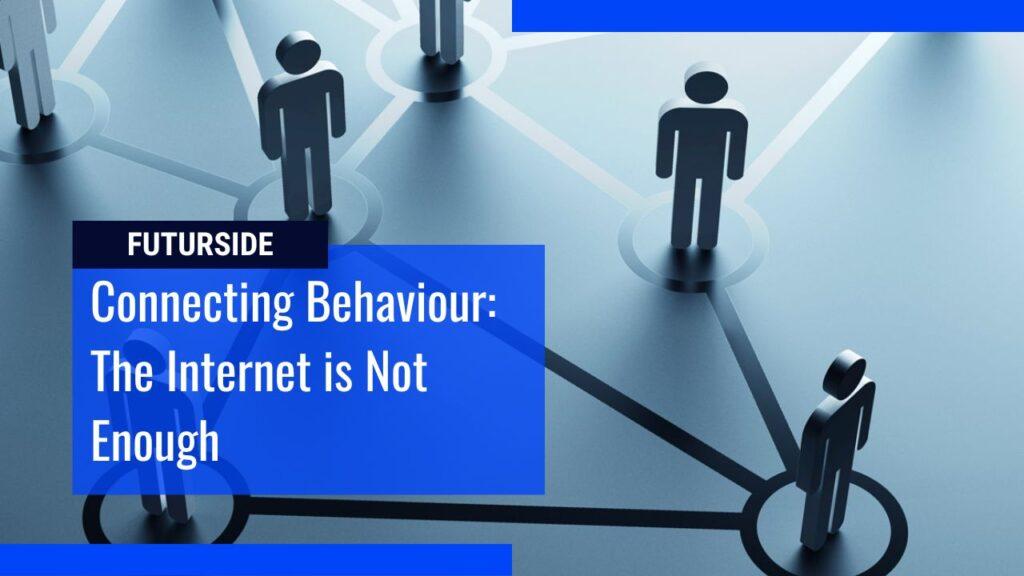We all use smartphones regularly nowadays. According to statista, there are more than 6.6 billion smartphone users around the world. This means that more than 83% of the global population own a smartphone. And most smartphone nowadays is packed with powerful processors and sensors, and more importantly, they can be connected to the internet.
Smartphones can also be tracked and generated a lot of data that can be stored and processed to seek patter. Take features like Google Maps. This geographical location can find out exactly where we are and where we spend time. If we are in a coffee shop or a shopping mall, the exact location is being recorded as well as the exact duration of time.
But that is only one example, with IoT devices on the rise, a lot of information is being generated. What is happening nowadays is that our behavioral pattern is being recorded. All the details movement of a particular individual is being tracked to form a user profile. The habits of users are being tracked by different organizations.
For example, online taxi services redefine their customer experiences using data figures. When we avail a taxi soon after leaving the coffee shop is due to sharing of this type of information. These types of techniques are known as the internet of behavior or IoB. The IoB is an extension of the Internet of Things (IoT).
We all know the Internet of Things, which is a network of physical objects that are embedded with sensors and software that allows them to connect and exchange data with each device in the network over the internet. The number of IoT devices has doubled over the past five years.
We all use IoT devices that collect a large amount of usage data. It also provides valuable information about users’ behavior, interests and preferences. All our data are being tracked, stored, and processed, thus the concept of the internet of behavior.
The IoB is the analytics of data collected from devices that are connected to the internet of things. Then businesses use this information to influence to some extent user and consumer behavior. Usually for the purpose of trying to get consumers to buy a company’s product or service.

Contents
What is the Internet of Behaviors?
Understanding consumers’ buying and social habits have become an increasingly important part of marketing. Consumers generate a huge amount of data and analyzing this data can help businesses target their audience and enhance customer experience. The use of Internet of Behavior technology can help businesses better understand their consumers and tailor their ads to their specific needs.
IoB is a subset of the Internet of Things, which collects data from multiple connected devices. This helps businesses understand customer preferences and growth patterns. Knowing what consumers want and how to meet their needs can improve their returns. Businesses can improve their campaigns and promote customer well-being using IoT data.
This technology can be applied in several different sectors, including retail, health, finance, etc… IoT devices gather inputs about customers. With this information, marketers tailor advertisements based on their interests and interactions. For instance, a grocery store owner might use IoB data to target advertising to a specific customer base.
IoB technology combines existing technologies with the principles of psychology to improve customer experience. Companies can influence human behavior with targeted content, which in turn makes their products more appealing to consumers. Businesses benefit from these advanced technologies by delivering personalized and relevant experiences.
The potential for this type of content is enormous. This technology is currently the fastest-growing field in marketing. By 2023, 40% of the world’s population will be digitally tracked to influence their purchasing decisions. Gartner recently released its annual technology trend report and predicted that 3.5 billion people will be affected by this new technology.

It is anticipated that the Internet of Behaviours will push the boundaries of digital technology and challenge the very notion of human identity in the digital age. In addition, social media platforms generate an epitome of data about each individual. Social media has become one of the most popular ways to engage with customers and track their changing tastes.
Why do we need the Internet of Behaviors?
The Internet of Behaviors involves the collection, analysis, and monitoring of data about human habits. With this data, organizations can create tailored recommendations for individual consumers based on their lifestyle, location, and other factors. The IoB provides crucial insight into improving efficiency and security.
IoB enables organizations to track compliance with security protocols and monitor consumer behavior. The concept is rooted in research and is gaining traction with companies and researchers alike. Using this approach helps businesses to make better use of data. It enables businesses to create more relevant advertisements and provide real-time information about a point of sale.
A company can use the information collected to analyze prospects and make more informed decisions. These data can be useful for business operations as they can replace numerous customer surveys and improve customer satisfaction. Businesses can use this information to target their marketing efforts based on an individual’s past conduct, preferences and spending habits.
In this way, the Internet of Behaviors can influence consumer behavior. For example, an industrial site can use this approach to monitor compliance with its health protocol. Computer vision and sensors can determine whether employees are washing their hands or wearing a mask and speakers can be installed to warn people who have violated protocols.
The IoB can even be used to improve the quality of service at a company. It gives the ability to track users in real-time and monetize the data generated. This technology plays a key role in e-commerce, healthcare, customer experience management and search engine optimization. And the creation of smart cities, smart homes, smart buildings, smart offices and smart spaces, more data points are emerging.
It has many properties from enabling companies to customize promotions based on real-time data to sending alerts when someone’s blood pressure is too high through remote patient monitoring and the Internet of Medical Things. The Internet of Behaviors is a rapidly growing industry, with many businesses already exploiting the power of data collected about their users.
For example, a digital shop may show a pop-up ad for 25% off jeans to a user, if they have previously shown interest in a pair of jeans. When the user clicks on the ad, the platform updates its data based on their preferences, resulting in more relevant advertising. Companies like Uber have embraced the concept of IoB. The service uses data from connected devices to track user locations and collect feedback.
It then runs algorithms to determine how to improve the customer experience. Another example is a cafe in Sydney that suggests drinks based on the tastes of regular customers. Whether the cafe offers drinks of the correct temperature or whether it is serving a particular flavor, the company can learn from this data to improve the customer experience.
The importance of Internet of Behaviors
The Internet of Behaviors is a growing discipline that can help businesses understand the needs and preferences of customers. It allows marketers to collect massive amounts of information about consumers. Correct analysis of this data provides valuable insights into consumer preferences, which can improve marketing and product experience of businesses.
The IoB is a quite new model for data collection that turns data into knowledge. Big data has become a major concern for organizations’ success and now IoB helps them to understand the habits of their customers even better. This behavioral monitoring technique takes advantage of IoT data and leverages it for digital marketing.
IoB also assists enterprises in building custom offerings and is more natural than Google. Its applications are numerous and growing rapidly. It is especially useful in tracking customer behaviors on social media platforms, which are among the most engaging ways to know about customers and keep track of their changing tastes.

The Internet of Behaviors also allows companies to study customer behavior in unique scenarios. Companies can gather data from different points of contact, such as web search engines, social media platforms, connected devices and even buy data from data brokers. This enables them to build common ground with consumers and create new ways of communicating with them.
Facial reputation studies, for example, allow agencies to learn what consumers are looking for and how to deal with any negative experiences. By understanding consumer behavior in the most natural way possible, companies can enhance the overall experience and increase the level of consumer loyalty.
The IoB helps marketers understand and monetize huge amounts of data. Search engines are already using a variety of methods to better understand user behavior and better deliver search results. With its emergence, the Internet of Behaviors has the potential to revolutionize the way businesses do business.
The data IoB can gather is inexhaustible. The data generated helps businesses improve efficiency and customer satisfaction. Businesses can now stop conducting multiple surveys to understand what their customers want. They can also analyze the behavioral pattern of their customers and prospects to improve their offerings and services.
The Internet of Behaviors has many applications. As IoT becomes more common, companies will be able to track their customers as well as employees and make decisions based on that information. With this technology, organizations can also gain insights into how employees behave and what their preferences are.
The IoB can also help improve the efficiency of business operations. It can also provide a platform for predictive analytics and better customer service. It also allows logistics managers to implement strategic route planning based on detailed data generated by their vehicles.
For example, a fleet manager can use this data to create optimal routes based on specific driving habits, real-time incidents on a route and the type of delivery being made. It is estimated that by 2025, the majority of shopping sites will have auto-checkout systems which means that more data will be generated and provide more insight into the consumer. And with the increasing numbers of connected devices entering the internet of everything, the benefits of IoB will only expand.
The benefits of the Internet of Behaviors
Internet of Behaviors can enhance consumer experiences by monitoring the purchasing habits of consumers. It can also help companies track their journey through a customer’s life. By monitoring consumer habits on social media platforms, marketers can target their message to a specific demographic and refine their product or service offerings.
Marketers can even better understand consumers’ tastes and preferences. In short, the IoB can improve marketing and customer engagement for businesses. It is being used in many industries, including manufacturing. By analyzing worker behavior on a massive scale, this technology can reduce monitoring costs for companies.
Additionally, IoB helps businesses understand how their customers think and act. This is essential for a business to succeed. And it makes it easier than ever to reach customers of any demographic and improves their customer experience. It is also possible to use the Internet of Behaviors for governing properties.
IoB allows the usage of data collected by IoT devices to understand people’s behavior. This technology encourages specific etiquette, it makes it easier for authorities to track compliance with regulations and protocols. It can also be used to track illegal activities. It makes it easier for businesses to monitor human behaviors.
The Internet of Things is already making it easier to gather the data needed to determine customer behavioral patterns. With such information, businesses can better tailor their marketing and sales efforts to meet consumer needs. Ultimately, the IoB will be an important tool for companies and businesses. Which in turn increases sales and returns.
It is also cheaper and more lucrative for companies to target a specific segment that is interested in a product than the global population. When properly utilized, the Internet of Behaviors can help transform marketing and sales. It can also be used for product development and adjustment before launching a service.
This behavioral internet can help in the health industry as well. The technology can monitor how many calories an individual consumes, how many minutes they exercise and what types of food they eat. It can help people make more informed decisions based on their own behavior.
YouTube uses the Internet of Behaviors to detect people’s tastes and preferences which helps them tailor the best suggestion of content for viewers. In a nutshell, the IoB is a technology that allows devices to communicate and share data. Devices can learn about a user’s preferences and behavior and then adapt to those preferences by giving them personalized information.
With these applications, the future looks bright for this new technology. The benefits of the Internet of Behaviors are endless and its application is not limited to a specific industry but the world as a whole.

0 Comments